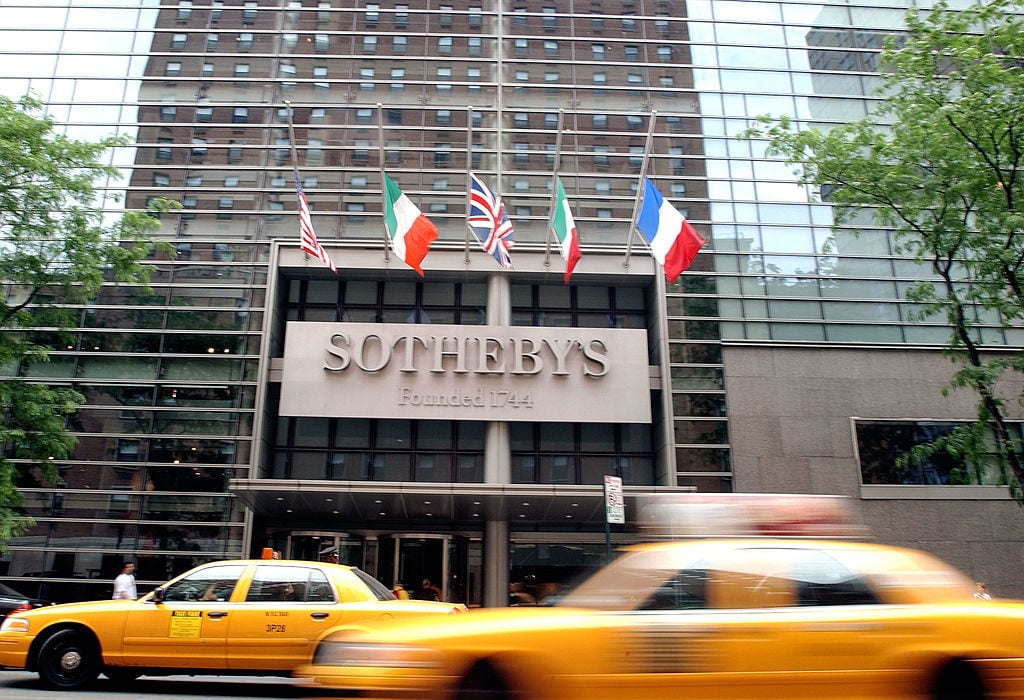Auctions
Sotheby’s Quarterly Financial Report Shows That Behind Flashy Sales, Pricey Guarantees Are Sinking Profits
A change in the Hong Kong sales date also affected the house's second-quarter report.

A change in the Hong Kong sales date also affected the house's second-quarter report.

Eileen Kinsella

Sotheby’s posted its second-quarter financial results this morning, which showed a decline in profit despite higher overall auction sales. The house attributes this in part to high auction guarantees for top works and a calendar shift of the Hong Kong spring sales from the second quarter to the first quarter of 2018.
For the three months of the quarter, which ended June 30, Sotheby’s reported a total revenue of $345.6 million, up from $339.9 million in the same period last year. Despite the increase, net profits fell to $57.3 million, or 25 percent, from $76.9 million. Earnings per share fell to $1.08 from $1.43.
Overall, auction sales were also up by 10 percent, to $2 billion from $1.8 billion in the second quarter of 2017. Private sales jumped 57 percent, to $296 million.
Shares of Sotheby’s, which trades on the New York Stock Exchange under the symbol “BID,” were under pressure this morning, down $3 per share, or more than 5 percent, to around $50. Shares hit a 12-month high at around $60 this past Jun, but had been trending lower in the past two months and immediately fell following this morning’s report.
Sotheby’s said in a statement that results were impacted by a decline in its auction commission margin. During the second quarter, “the art market was driven by competitive high-value consignments from fiduciary sources such as estates, foundations, and charities. Accordingly, when compared to the prior year periods, our auction commission margin was reduced by a higher level of auction commission shared with consignors in these situations.” In other words, the auction house was forced to sacrifice some of its profit to lure top-flight works.
Further, results were “negatively impacted” by buyer’s premiums, some of which were “used to offset auction guarantee shortfalls and fees incurred in respect of auction guarantee risk sharing agreements.” Sotheby’s said the current period was hurt by the sale of two guaranteed paintings in particular.
In May, Sotheby’s offered a 1917 Amedeo Modigliani painting of a reclining nude woman with a record presale estimate of $150 million—the highest ever placed on a work at auction. The work sold for $157 million, including premium, after sparse bidding. The auctioneer opened the bidding at $125 million but there did not appear to be immediate demand. Eventually it was hammered down for for a final bid of $139 million and sources said it was won by the so-called “irrevocable bid,” or third-party guarantor.
Another major guarantee was for a Picasso portrait of Marie-Thérèse Walter, Buste de femme de profil. Femme écrivant (1932), which carried an estimate in the region of $45 million. Offered at the evening sale of Impressionist and Modern art in London in June, it failed to reach the estimate and sold on a single bid, presumably to the guarantor, for £27.3 million ($36 million).
With respect to the Hong Kong calendar shift, Sotheby’s said the change meant that $130 million in net auction sales and $20 million in operating income fell within the first-quarter report.
“Overall these results were lower than expected,” said Sotheby’s CEO Tad Smith on a conference call with investors and analysts this morning. He conceded that with respect to the season’s highest-priced lots “there appeared to be a bit less bidding than a year ago.”
Smith framed the dip as a temporary setback and added that, in general, the market is “clearly healthy.” He was upbeat about the outlook for Sotheby’s future, saying the auction house is on track “to deliver another year of excellent growth in auction sales and even more impressive growth in private sales.”
Smith cited increases in online sales (up about 30 percent compared with last year to just over $100 million), and growth in the number of online bidders (up 45 percent). “We are confident that our strategic initiatives to differentiate our company are picking up steam,” he said.